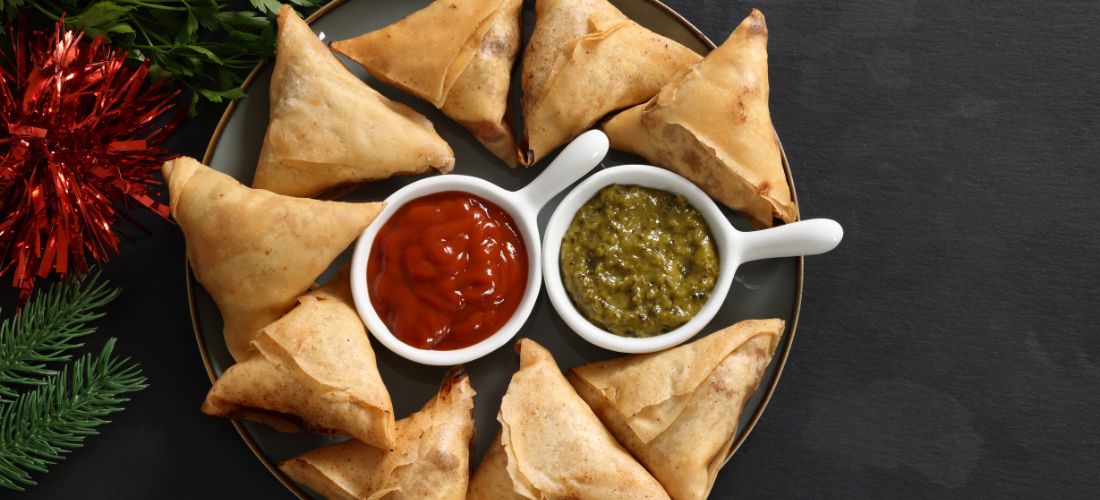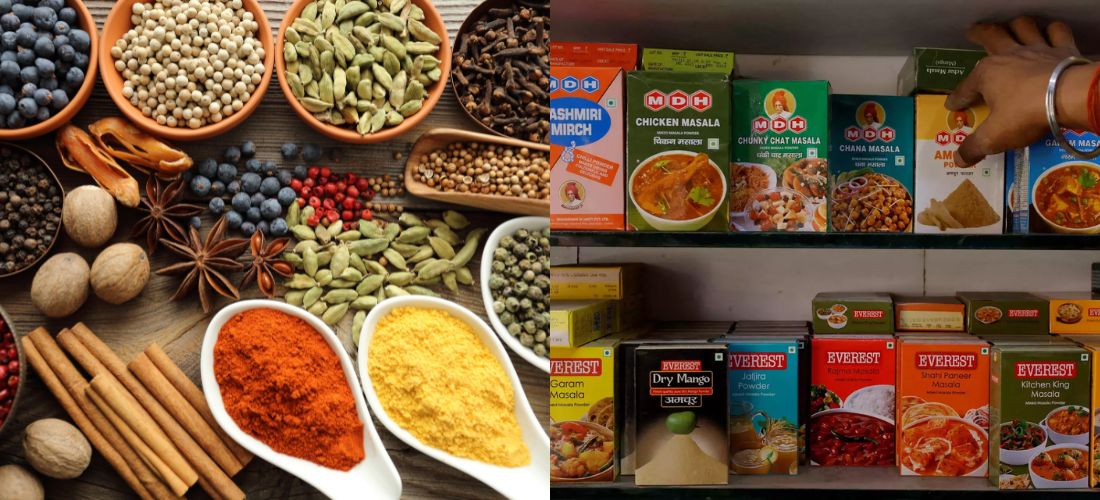Samosas are a favorite fried snack across India, loved for their crispy-crunchy exterior and delicious filling. It is usually made from pastry dough filled with spiced potatoes, peas, and onions. However, while delicious, they are also high in calories, fat, and sodium.
One small samosa (30 grams) can contain around 120-134 calories, depending on the filling. Most of those calories come from fat (around 60%). Samosas do contain some protein but in much smaller quantities (around 5-9% of calories from protein).
Here’s a table summarizing the calorie content of different types of samosas (small size – 30 grams):
| Samosa Variety | Calories | Carbs | Protein | Fat |
| Vegetable Samosa | 120 | 35% | 5% | 60% |
| Egg Samosa | 124 | 31% | 7% | 62% |
| Chicken Keema Samosa | 129 | 32% | 9% | 59% |
| Mutton Keema Samosa | 130 | 32% | 8% | 60% |
| Aloo Samosa | 130 | 35% | 5% | 60% |
| Onion Samosa | 131 | 36% | 5% | 59% |
| Paneer Samosa | 134 | 33% | 7% | 60% |
Also Read: Organic Farming — Good or Bad
Samosa and Your Health
Given their high calorie and fat content, it’s best to enjoy samosas sparingly. Here’s a look at how they may affect various health conditions:
- Samosas are not ideal for weight loss goals due to being high in calories and fat.
- Samosas can worsen diabetes due to the high trans fat content, potentially leading to complications like high blood pressure and heart disease.
- The trans fat in samosa can contribute to artery blockage, raising blood pressure.
- Refined wheat flour (maida) in samosa worsens insulin resistance for people with PCOS.
- Samosas’ high calorie and fat content makes weight loss difficult for people with hypothyroidism.
- Samosas’ high fat content may suppress the immune system, impacting gut health which is crucial for proper immune function.
- Samosas are low in protein and high in fat, not ideal for muscle building.

Also Read: Creativity vs Knowledge – Which Is Better?
Enjoy Samosas in Moderation
Samosa can be part of a balanced diet, but it is important to be mindful of portion size and overall calorie intake. here are some tips:
- Enjoy them occasionally: Samosas are best served as an occasional meal, not a regular part of your diet.
- Opt for smaller portions: Choose a smaller samosa or share a larger samosa with someone else.
- Baked Samosa: Consider healthier versions like baked samosa that are lower in fat.
- Pair with healthy options: Pair samosa with vegetables, fruits, or yogurt to create a more balanced snack.
Also Read: Online Vs Offline Shopping





